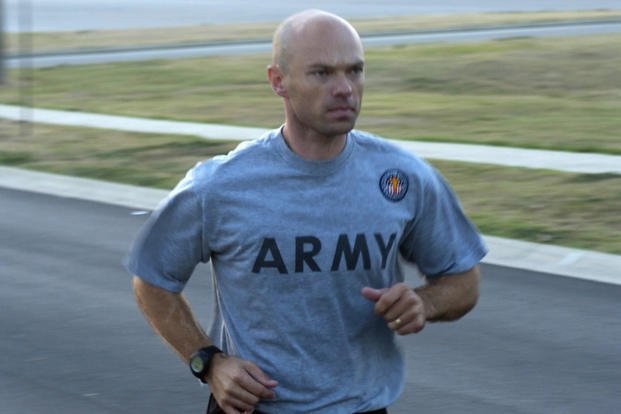There are many potential injuries that can pop up seemingly out of nowhere, especially when pre-training for and during actual Special Ops schools. If you are running longer distances than normal, swimming with fins for the first time, rucking and carrying heavy equipment (logs, boats, etc.), it could be only a matter of time before you start to get inflammation in your joints and soft tissues. Here is an email from a BUD/S candidate starting to feel the effects of increasing miles of cardio during his preparation.
Hello, Mr. Smith,
I ship out for basic on a SEAL contract this year. About three weeks ago, I injured my IT (iliotibial) band trying to run too hard. I have recently just started to recover and am slowly introducing myself back into running to get myself ready for my next PST on Feb. 16. I have been cross-training for leg strength and core workouts in the meantime. My question is, while in BUD/S, what would be your advice to prevent this injury again -- or really any injury, for that matter? I know injury is bound to happen in some way or the other, but I just want to prevent the ones that will get me rolled back.
Thanks,
Kenny
Kenny --
Yes, the old iliotibial band (ITB). This is such a common injury at BUD/S. In fact, it is so common at SEAL training that ITB stands for "I Tried BUD/S." The volume of running, swimming with fins, rucking and carrying boats and logs can put a lot of stress on your lower extremities (joints, bones, tendons, ligaments). For now, you need to reduce your volume and follow these rules:
- If it hurts to run, stop running.
- If it hurts to walk, do not run.
- If it hurts doing nothing, go see a doctor.
Now that is a fairly liberal approach to seeing a doctor, and if you follow these steps, it may help you avoid rule #3 if you are in the first two stages of an overuse injury.
1. Reduce running at least 50%. Replace with non-impact options like bike, elliptical and more freestyle swimming if you feel no pain in those.
2. Take out swimming with fins for now. But continue swimming freestyle and working on pool skills (drownproofing, treading, knot tying), but if the knee hurts doing anything in the pool, stop swimming.
3. Take an over-the-counter anti-inflammatory. Ask your parents and doctor which one is best. I use Motrin or ibuprofen with every meal when trying to reduce inflammation and pain in my body. Take it for a week.
4. Ice. Wherever there is pain after every day of training, apply ice or anything suitably cold. Do this for 10 minutes on and 10 minutes off for up to an hour.
5. Learn how to use a foam roller. Get one and roll your hips, thighs, hamstrings and ITBs. Video
|
|
6. Work some glute muscles. ITB often can be reduced by having a stronger gluteus medius. The glutes, specifically the gluteus medius muscle, is responsible for controlling thigh rotation, tracking of the patella (kneecap) and knee control.
A weak gluteus medius has been found to contribute directly to conditions such as ITB syndrome, patellar tendinopathy (runner's knee), shin splints, Achilles' tendinopathy and plantar fasciitis.
|
|
Common exercises: dirty dogs, Donkey kicks, side leg lifts
7. Perform dynamic stretching before and static stretching after running. A dynamic warmup prior to running involving controlled movement through a complete range of motion for each joint is better before you run. After running, the usual stretching for 20-30 seconds per body part without bouncing is acceptable. Maintaining flexible hamstring and calf muscles will help with injury prevention.
If you are not feeling better by trying the above elements for a week, stop running, lifting weights and calisthenics (legs), and swimming with fins completely for an entire week. Keep using ice, Motrin and foam rolling. Several days of no running and swimming with fins is tough, but you can do non-impact options like swim without fins, bike or elliptical if no pain is felt.
At BUD/S, you do have medical professionals that can help you recover. There is a fine line between sucking up pain and pushing through an injury. You have to know what that is. Seeing gradual increases in your pain and decreases in your performance is a clue to when you need to see a medical professional.
Stew Smith, CSCS
Stew Smith is a former Navy SEAL and fitness author certified as a Strength and Conditioning Specialist (CSCS) with the National Strength and Conditioning Association. Visit his Fitness eBook store if you're looking to start a workout program to create a healthy lifestyle. Send your fitness questions to stew@stewsmith.com.
Want to Learn More About Military Life?
Whether you're thinking of joining the military, looking for fitness and basic training tips, or keeping up with military life and benefits, Military.com has you covered. Subscribe to Military.com to have military news, updates and resources delivered directly to your inbox.




















